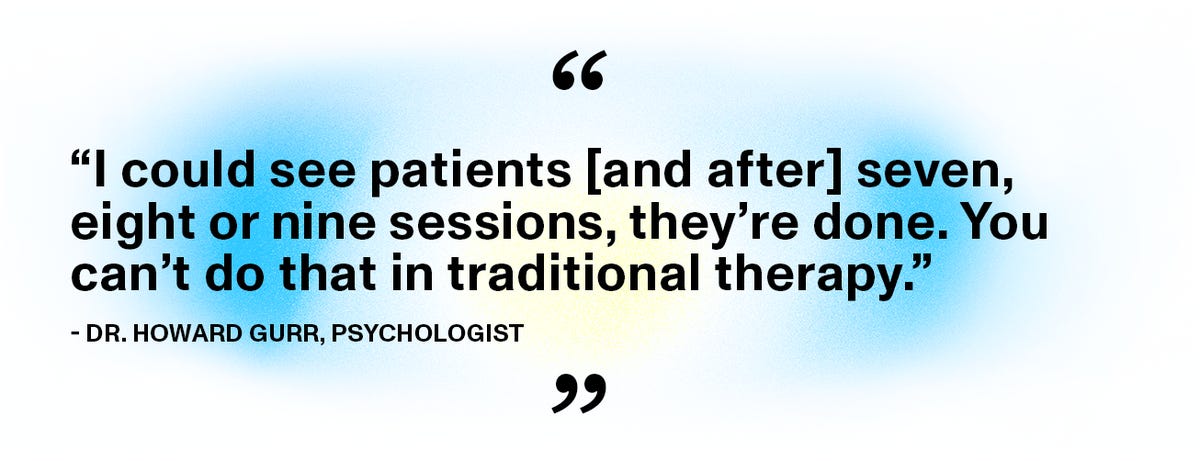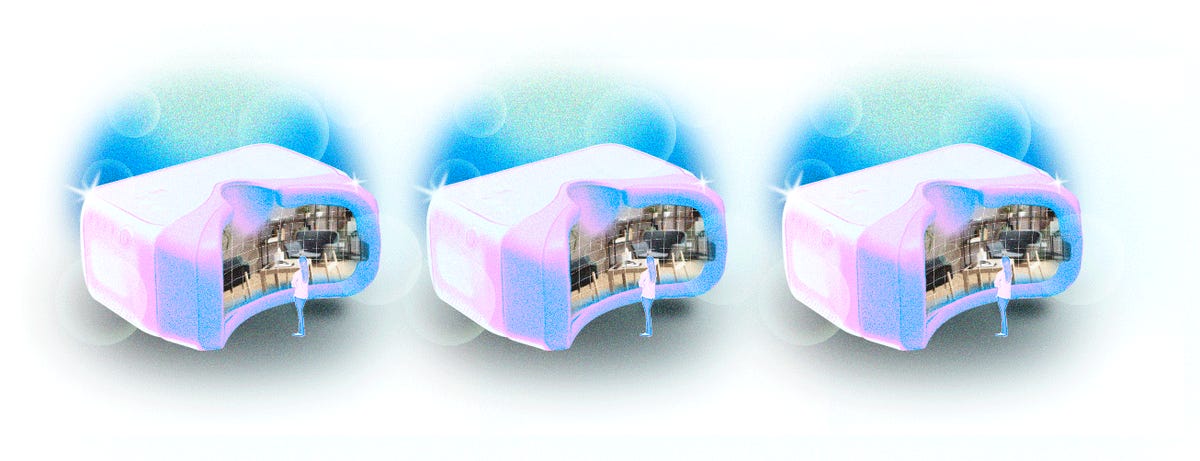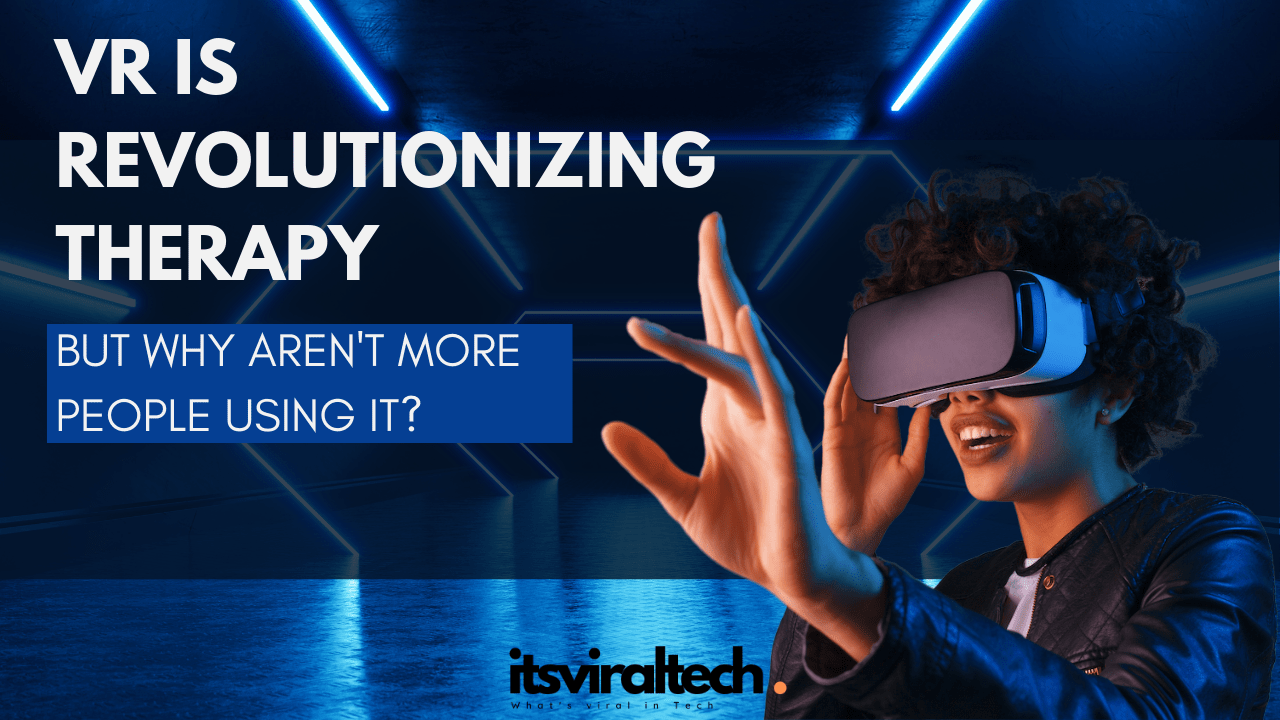VR Headset and VR therapy has been studied since the 1990s. But as of 2023, we’re still talking about its potential.
VR technology is revolutionizing mental health treatment, enabling therapists to create engaging environments that simulate reality and provide unparalleled levels of personalized care. For patients, it opens up a world of possibilities for immersive experiences unavailable with traditional methods.
What is Virtual Reality?
Virtual reality (VR) technology is revolutionizing the way we experience and interact with the digital world. VR refers to a computer-generated simulation of a three-dimensional environment that can be experienced through a headset or other immersive devices. It allows users to be fully immersed in a virtual world, where they can interact with digital objects and experience sensory stimulation as if they were in a real-world environment. VR technology is being used in a variety of industries, including gaming, entertainment, education, healthcare, and many more. With its ability to create highly realistic and immersive experiences, VR has the potential to transform the way we work, learn, and entertain ourselves in the years to come.
What is a VR headset?
A VR headset, also known as a virtual reality headset, is a device that users wear on their head to experience virtual reality. It is typically comprised of a display, lenses, and motion sensors. The display is divided into two parts, one for each eye, and is used to create a 3D image that appears to be immersive and interactive. The lenses are used to focus the image and provide a wider field of view, while the motion sensors track the user’s head movements, allowing the user to look around and interact with the virtual environment. VR headsets are used in a variety of applications, including gaming, education, training, and entertainment.
VR Therapy-Mental Health Treatment
1. Psychological Growth
Researchers are delving into the depths of virtual reality technology to uncover deeper insights into mental health and generate new treatments. VR has opened up a world of possibilities for psychological issues, allowing patients to explore tranquil beaches or verdant forests to promote relaxation and well-being. Through active interaction with triggers such as sights and sounds, this form of therapy is proving beneficial in treating conditions like anxiety, depression, and PTSD – revolutionizing treatment methods along the way!.
As an example, a patient with a fear of flying can be gradually exposed to the experience of flying in a controlled virtual environment, allowing them to process their emotions and overcome their phobia.
2. Ability to simulate real-life scenarios and experiences
With the use of virtual reality technology, mental health treatment is becoming more personalized and effective. VR simulations provide patients an opportunity to tackle real-life scenarios in a safe space – building their confidence while learning key communication, problem-solving and social skills that can be applied outside of therapy. Studies have also proven its effectiveness for treating conditions such as acrophobia or claustrophobia; allowing users to confront their fears gradually with minimal risk involved.
Additionally, this has helped make therapy more readily available to people who previously may have had difficulty seeking it. For individuals living in rural areas or with mobility difficulties, accessing mental health treatment can be a challenge. VR provides a solution to this problem by allowing patients to receive treatment from the comfort of their own homes. Besides, the cost is much lower compared to traditional in-person therapy, making it more accessible to people from all walks of life.
3. Data Analysis of Patient
Virtual Reality technology is revolutionizing mental health care by introducing a pioneering approach to collecting and interpreting data during therapy sessions. This unprecedented access allows practitioners the opportunity to analyze their patients’ experiences in real-time, monitor progress more precisely, and refine treatment plans accordingly – all leading to improved outcomes and greater accuracy when diagnosing conditions. The impact of this development on patient well-being could be immeasurable as we usher in an era of better-informed treatments for individuals seeking support about their emotional well-being.
With research ongoing, this technology could revolutionize mental health treatment as we know it. It’s a thrilling thought to consider how far the potential of this tech might take us in our ability to care for individuals’ well-being and emotional states in years ahead!
Also Read:: iPhone 15 Pro images leak, iOS 16.4 & new AirPods imminent

For decades, VR technology has been a topic of conversation for its potential to help alleviate stress and mental health issues. But fast forward three years from now in 2023 – at the height of where awareness is needed most due to pandemics like COVID-19 – it feels as though we’re still stuck on debating this tech’s possibilities instead of experiencing its positive effects firsthand. Despite advancements in headset production, high costs coupled with a lack of knowledge have inhibited individuals from utilizing this tool effectively – leaving us distant from being able to use virtual reality headsets confidently when overcoming our biggest phobias or anxieties such as fear of crowds before taking public transportation altogether.
After conducting a ground-breaking 1995 study into the potential of virtual reality (VR) for use in psychotherapy, Dr. Barbara Rothbaum – Associate Vice Chair of Clinical Research at Emory University School of Medicine – expressed disappointment that so few medical professionals had made use of this technology after all these years. One such user is Stokes who was inspired by an inspiring TV news report on how VR was being trialed as part of treatments for phobias with oVRcome’s same-named app providing some successful outcomes from Christchurch, New Zealand
“Unlike maybe some other fears, I had an end date,” Stokes said. “I knew that I had to get a COVID vaccination. So I knew that this was my chance.”
The evolution of VR
Experience virtual reality (VR) on a budget! In 2023, you can use Google Cardboard headsets to delve into the digital world for under twenty dollars. This is quite different from what Dr. Barbara Rothbaum experienced while researching her study published in 1995’s American Journal of Psychiatry – then she needed an eye-wateringly expensive $150k computer and $16k headset!
A room with space to spare and a chilly atmosphere was chosen for the computer – necessary both due to its size as well as temperature requirements. The patient wore a head-mounted display while in conversation with Rothbaum, however, all instructions were transmitted via an intercom through an assistant operating the machine from another area of the facility.
“It was a very big operation,” she said.
In the 90s, when virtual reality headsets were scarce and difficult to come by, Rothbaum was concerned that her research may face a premature end. Her fears grew even more intensified as one of her most preferred models became discontinued.
“I thought, well, that’s the end,” she said. “That’s the end of our work.”
After the release of the first VR headset, many others followed suit. Rothbaum’s affinity for collecting them grew so much that her home office was transformed into a museum-like showcase! She pays close attention to resolution and comfortability when selecting which ones she wants in her collection, as they will be put to good use during long sessions with patients.
The world of virtual reality (VR) has come a long way since its beginnings in the ’90s! Facebook parent company Meta currently leads the pack, with an impressive 81% market share as of Q4 2022. Despite this progress however, there are still usability issues to be addressed such as short battery life and limited compatibility with prescription glasses.
Oculus Quest 2 has revolutionized the VR industry by introducing a $400 headset that functions independently from any other device. This is an immense leap forward compared to 2016-era headsets, which required expensive computers for operation. Sony recently released PlayStation 5’s premium counterpart, PSVR2 – more advanced with vivid display and haptics features – but still needs to be connected to its main console system to use it.
A rise in demand for immersive at-home entertainment during the pandemic, combined with the hype surrounding the metaverse, has resulted in more attention being paid to virtual reality.
According to Ramon Llamas, a research director for The International Data Corporation, the world is on its way toward creating an immersive digital universe – but it’s going to be some time before we get there. In the meantime though, virtual reality promises plenty of exciting and unexpected innovations!
Trying VR therapy
Virtual reality exposure therapy (VR) has become increasingly popular as an effective tool against specific phobias, with twelve of the nineteen studies that were examined in a 2021 scoping review showing reduced anxiety levels amongst their subjects. Rothbaum’s pioneering work had already set the groundwork for further exploration into this field and we can happily report advancements have been made since then.
Try it for yourself and you’ll quickly understand why Dr. Howard Gurr, a New York-based psychologist who offers virtual reality therapy, uses Amelia Virtual Care’s helpful software to provide his clients with the best care possible. Experience this cutting-edge technology with a simple click of play!

How VR headset Can Help You Conquer Your Fears
VR is still waiting for its breakout moment
The biggest problem is that people simply aren’t using VR regularly. If VR headsets were nearly as ubiquitous as smartphones, therapists would likely be lining up to find ways to incorporate them into their practice. But right now they have little incentive to learn about or invest in VR if their clients aren’t using it.
“The bottleneck has always been the cost,” says Dr. Albert “Skip” Rizzo, research professor at the University of Southern California’s department of psychiatry and school of gerontology.
In 2022, the global market for VR and AR headsets was estimated to reach an impressive 9.7 million units – a stark contrast compared with smartphones which shipped at 300.3 million yet experienced their largest ever single quarter decline in that same period of time according to IDC statistics.
Price of a VR headset: The cheapest option is Google’s Cardboard headset, if you want a device that can run through 360-degree videos or interactive adventures.
Apple may be on the cusp of revolutionizing virtual reality with an upcoming headset rumored to release in June. Marketed as a ‘head-mounted computer’, this revolutionary piece of technology could come at the hefty price tag of $3,000 – but if history is anything to go by (about bringing technologies like smartphones and smartwatches into public consciousness) then it won’t disappoint!
“Apple has a way of driving the tide that lifts all boats,” said Llamas. “It brings attention, and it brings legitimacy to many of the markets that it enters. And I don’t think VR will be different.”
It’s difficult to tell how many therapists and mental health professionals currently offer VR services, but some data can provide a clue. Amelia Virtual Care, which provided the software I used during my experience, has been used to help treat more than 20,000 patients, says founder Xavier Palomer. The software is used by more than 2,000 mental health professionals around the world, according to a company press release.

Conclusion
In conclusion, Virtual Reality technology is revolutionizing the mental health treatment field by providing safe and controlled environments for patients to process their emotions, simulating real-life scenarios for patients to practice social skills and build resilience, making therapy more accessible, providing significantly useful data to be collected, helping patients overcome phobias and anxiety disorders, and providing innovative ways to cure these problems. The use of this technology in mental health treatment is changing the way this treatment was originally viewed and performed, offering numerous benefits over traditional therapy methods. Want to buy a VR gaming headset? Here you can buy


2 thoughts on “VR Is Revolutionizing Therapy. Why Aren’t More People Using It?”